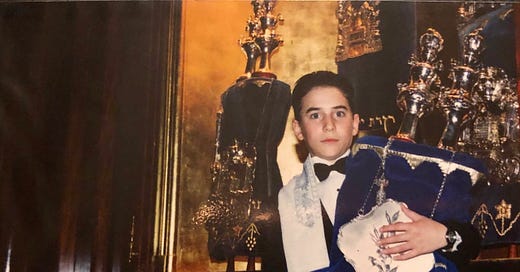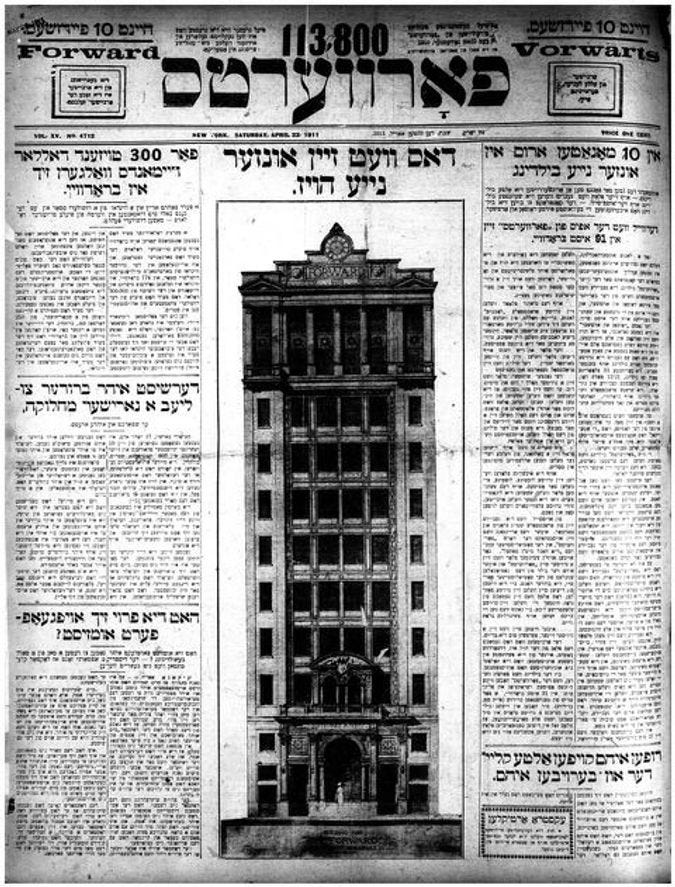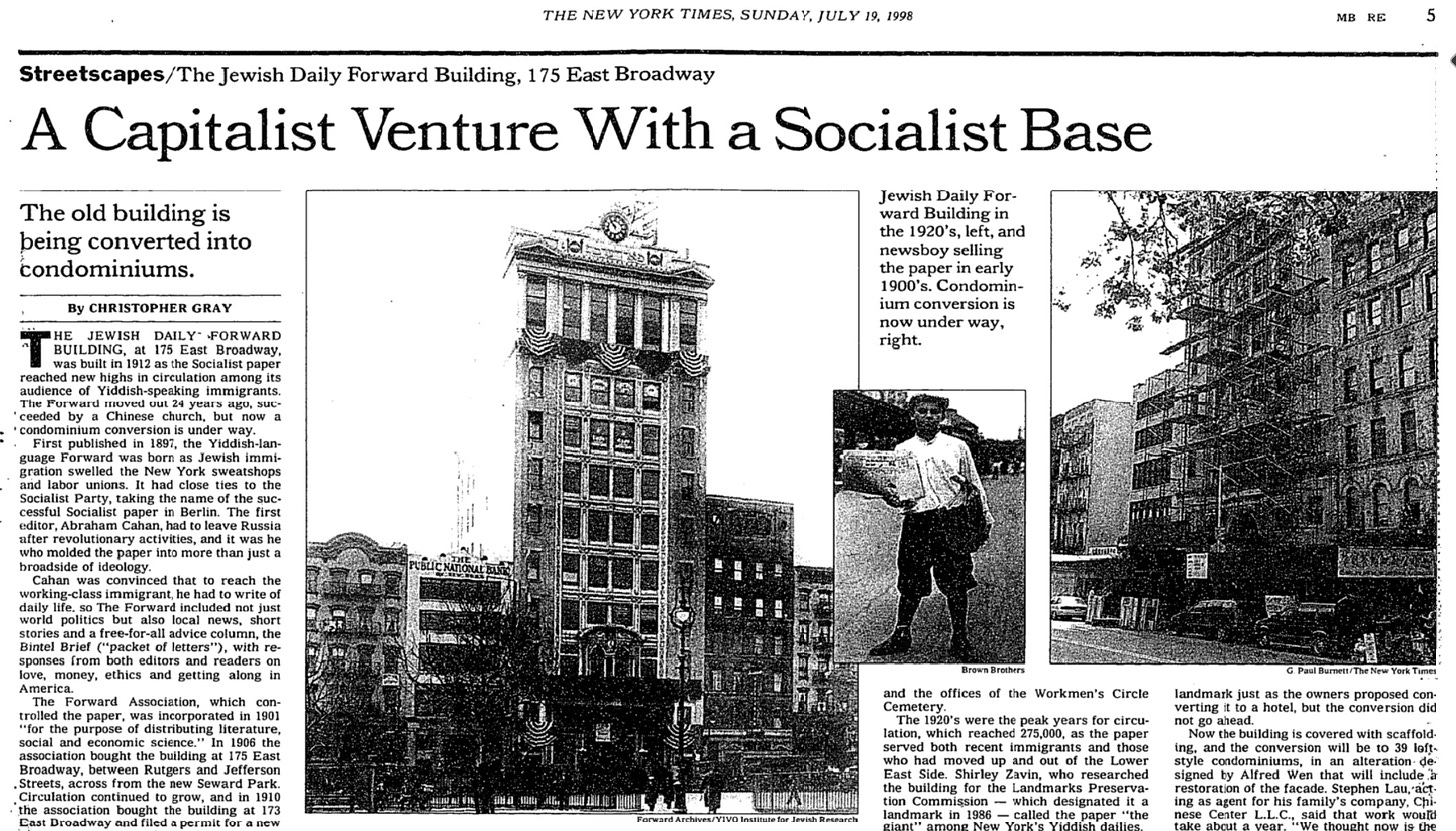After watching Fiddler on the Roof in Yiddish last week, I got to thinking about how big and powerful secular Yiddish and Jewish culture used to be in America in the first part of the 20th century — how diverse and left-wing and working class and radical it was.
As a Soviet-Jewish immigrant who came here in the early 1990s — just as neoliberalism was consolidating and taking over everything — it’s been hard for me to imagine that old Jewish world. And I’m embarrassed to say that I know its history only superficially.
But my ignorance isn’t that surprising considering that my Jewish-American education took place in liberal Bay Area circles. The place where I came into contact with American Jewish culture was at Sherith Israel, a reform synagogue that roped my family in almost as soon as we settled in San Francisco. We had several Jewish families assigned to us to guide our integration. Starting at age 10, I attended Jewish Sunday school there, got trained up for my bar mitzvah, got confirmed at 16, and took a six-week tour of Israel with my class as a reward.
Doing my best Jewish-American impersonation. San Francisco, 1994.
Thinking back to my time there through the 1990s, I now realize that the general vibe of the Jewish-American community was very aggressively PMC — full of mildly apologetic Zionism, liberal interventionism, progressive neoliberalism. Everyone was either a corporate lawyer, a doctor, or worked in finance.
As a fresh-off-the-Boeing immigrant with no historical roots here, I had no clue that another type of Jewish culture had existed in America not that long ago — a culture that actually fought power rather than accept establishment and big business dogma. I can’t recall this history being taught in my Sherith Israel Jewish Sunday school classes. Or maybe it was taught but quickly and superficially, because it never lodged in my memory. And, anyway, why would my school focus on this history? For a totally integrated neoliberal Jewish community, that old Jewish leftwing world must have seemed quaint and kinda embarrassing — an anachronism that had no relevance to an America that had just triumphed over communism and socialism.
So I was indoctrinated into an empty kind of American-Jewish identity — stripped of everything except a very superficial knowledge the Torah, periodic trips to the synagogue, and just enough Hebrew to get through my bar mizvah. There was something fraudulent about the whole thing. Like everyone was just pretending to be Jewish. Sure, Jewish culture — things like Fiddler on the Roof — could be celebrated, but not the politics and the sensibilities and the history that produced it.
That’s how it was in California. Maybe it was different on the East Coast, where most of the old Jewish and Yiddish culture lived. A few people I know in New York went to children’s summer camps that had been founded by socialist and communist Jewish organizations. But I hear even those camps had morphed into a bland brand of mainline Jewish progressivism.
Whenever I’m on the Lower East Side in Manhattan, I walk by a monument to that old dead world: The former headquarters of The Forward.
The paper was connected to the socialist labor movement. At one point, it was the biggest Yiddish-language daily newspaper in America with a national circulation that edged close to 300,000 in the 1920s. It had bureaus in major American cities, including Los Angeles and Philadelphia. The paper had so much money, it built its own beautiful building on the Lower East Side in 1912 — complete with bas-relief busts of Marx and Engels above the front entrance. It was the tallest and most spectacular building in what used to be a Jewish slum — a bit too fancy for a leftwing rag founded to “adhere to and propagate the principles of International Socialism,” if you ask me.
The Forward downsized and moved out of it 1974. The building has since been converted to trendy, celebrity-inhabited luxury condos. Spike Jonze lives here, as did Tatum O’Neal. She got busted buying crack just outside the building.
What a difference 86 years made.
The trajectory of the Forward’s HQ — from a socialist paper to upscale apartments — perfectly encapsulates the political and cultural trajectory of American Jews. We went from being working class and socialist to PMC and neoliberal and neoconservative. In short, we Jews joined the establishment.





